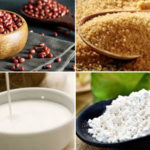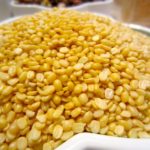Tapioca Flour and Wheat Flour: What Are They?
Tapioca flour is a cooking ingredient derived from cassava starch. It is known as “bột năng” in the southern region, “bột sắn” or “bột đao” in the northern region, and “bột lọc” in the central region of Vietnam. With its high viscosity and adhesive properties, tapioca flour is commonly used in the preparation of dishes such as jellies, porridge, and dumplings.

On the other hand, wheat flour is made from wheat grains and is utilized in the creation of bread, pastries, cookies, and pizzas. Unlike tapioca flour, wheat flour cannot produce the same level of viscosity. There are different types of wheat flour available, including black wheat flour, white wheat flour, regular wheat flour, number 8 wheat flour, and number 11 wheat flour. Each type varies in protein content, allowing for the production of different types of bread.

How to Differentiate Between Tapioca Flour and Wheat Flour
At first glance, tapioca flour and wheat flour may appear similar due to their white powder form. However, there are specific characteristics that can be used to differentiate between the two:
| Tapioca Flour | Wheat Flour |
| Soft, less smooth texture | Darker color, smoother texture |
| Creates a sticky and adhesive mixture when mixed with water | Does not create stickiness, but possesses elasticity and fluffiness |

Various Cooking Methods with Tapioca Flour and Wheat Flour
Tapioca flour can be used in a variety of dishes and also offers health benefits for those with heart disease and diabetes. Here are some dishes that can be prepared using tapioca flour:
- Crab soup (uses tapioca flour for viscosity)
- Wrapped tapioca cakes
- Jelly in different recipes
- Pork skin cakes and dumplings

Wheat flour, on the other hand, is primarily used in the preparation of bread, cupcakes, pizza, sponge cake, and cookies.

We hope that this article has provided you with valuable information and helped you distinguish between tapioca flour and wheat flour!






































